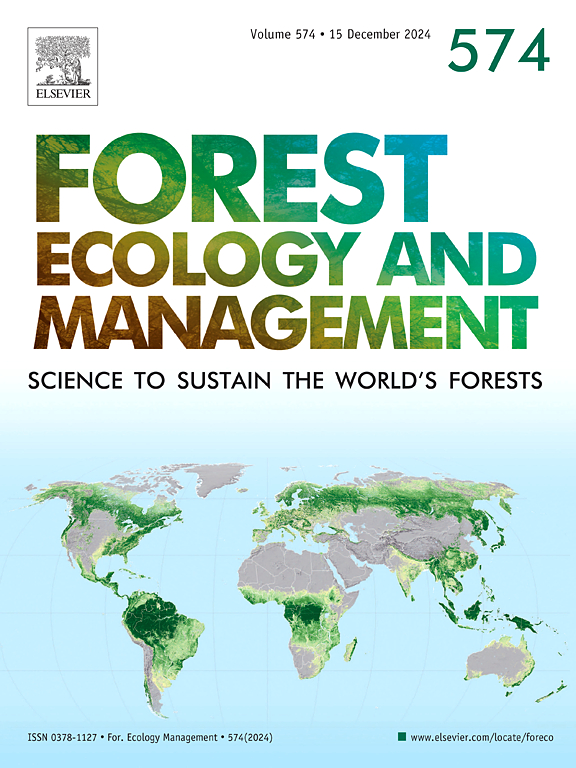Recovery of planted spruce seedlings from abiotic damage caused by exceptional weather conditions in the boreal forest: Identification of risks associated with site selection and regeneration practices
IF 3.7
2区 农林科学
Q1 FORESTRY
引用次数: 0
Abstract
Extreme weather events are predicted to increase in the Nordic boreal region with climate change, and stress conditions can damage newly planted seedlings and affect future stand development. The aim of the study was to investigate the recovery of Norway spruce (Picea abies (L.) Karst.) container seedlings from winter and drought damage in southern and central Finland (60–64°N) and the effect of damage on regeneration outcome three growing seasons after damage. Abiotic damage reduced the number of planted spruces (over 1600 trees ha−1) to an average of 1500 planted crop trees ha−1 three years after damage. Natural regeneration supplemented the stands and regeneration outcomes were good (>1600 trees ha−1) in most of the stands. Abiotic damage reduced planted spruces quality, increased the number of multiple stems, and further reduced planted tree growth. Weather conditions had an effect on the recovery of drought-damaged seedlings, but not on the recovery of winter-damaged seedlings. Fall planting, packing growing seedlings in closed cardboard boxes during summer and fall, and planting growing seedlings from outdoor winter storage in dry conditions in early summer reduced seedling recovery from abiotic damage. The use of open geospatial data is promising to identify regeneration sites at high risk of abiotic damage (dry sites and high topographic position). In conclusion, good regeneration results in a changing climate can be achieved by making the right decisions during the regeneration process and by using natural regeneration to supplement planted spruce stands.
求助全文
约1分钟内获得全文
求助全文
来源期刊

Forest Ecology and Management
农林科学-林学
CiteScore
7.50
自引率
10.80%
发文量
665
审稿时长
39 days
期刊介绍:
Forest Ecology and Management publishes scientific articles linking forest ecology with forest management, focusing on the application of biological, ecological and social knowledge to the management and conservation of plantations and natural forests. The scope of the journal includes all forest ecosystems of the world.
A peer-review process ensures the quality and international interest of the manuscripts accepted for publication. The journal encourages communication between scientists in disparate fields who share a common interest in ecology and forest management, bridging the gap between research workers and forest managers.
We encourage submission of papers that will have the strongest interest and value to the Journal''s international readership. Some key features of papers with strong interest include:
1. Clear connections between the ecology and management of forests;
2. Novel ideas or approaches to important challenges in forest ecology and management;
3. Studies that address a population of interest beyond the scale of single research sites, Three key points in the design of forest experiments, Forest Ecology and Management 255 (2008) 2022-2023);
4. Review Articles on timely, important topics. Authors are welcome to contact one of the editors to discuss the suitability of a potential review manuscript.
The Journal encourages proposals for special issues examining important areas of forest ecology and management. Potential guest editors should contact any of the Editors to begin discussions about topics, potential papers, and other details.
 求助内容:
求助内容: 应助结果提醒方式:
应助结果提醒方式:


